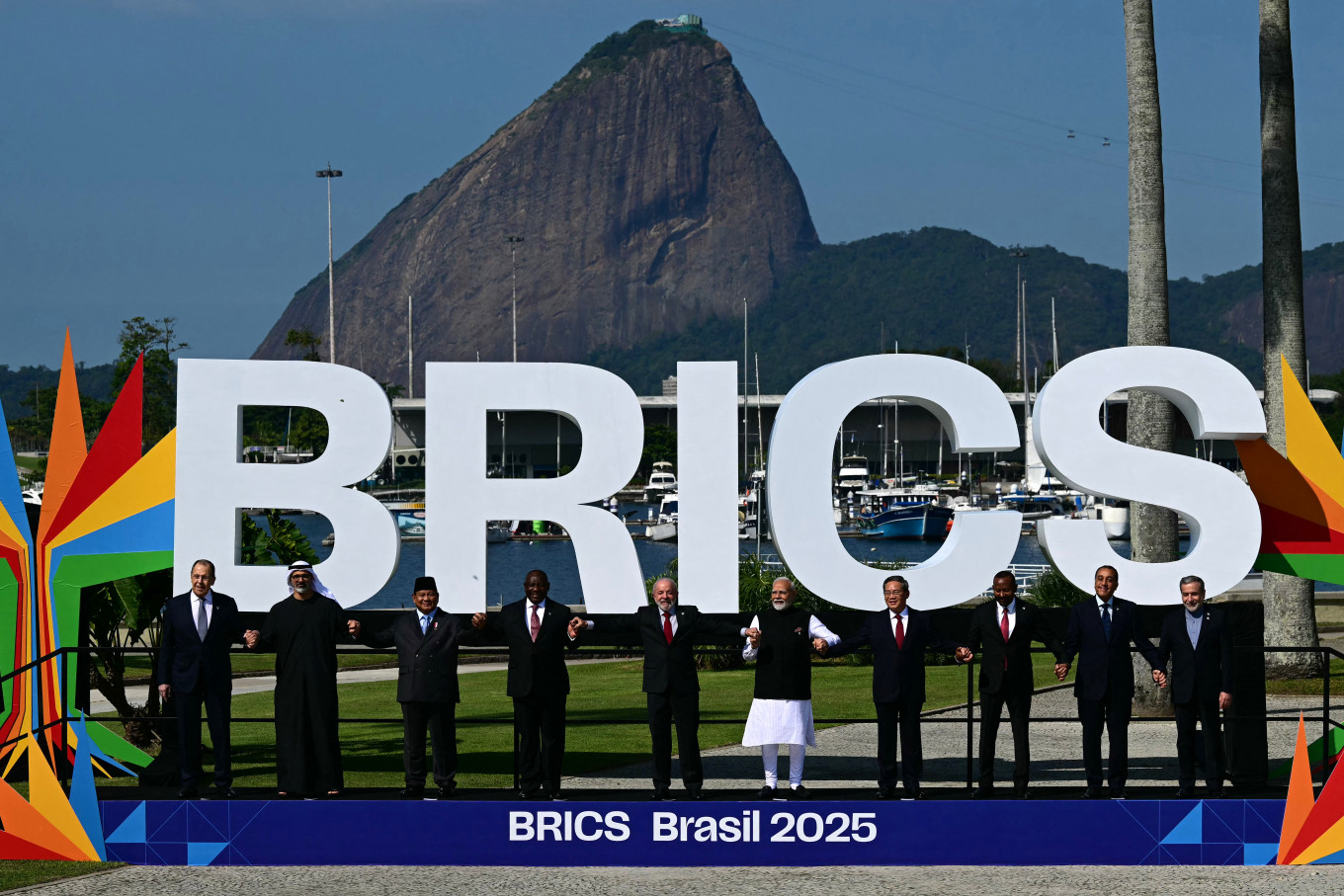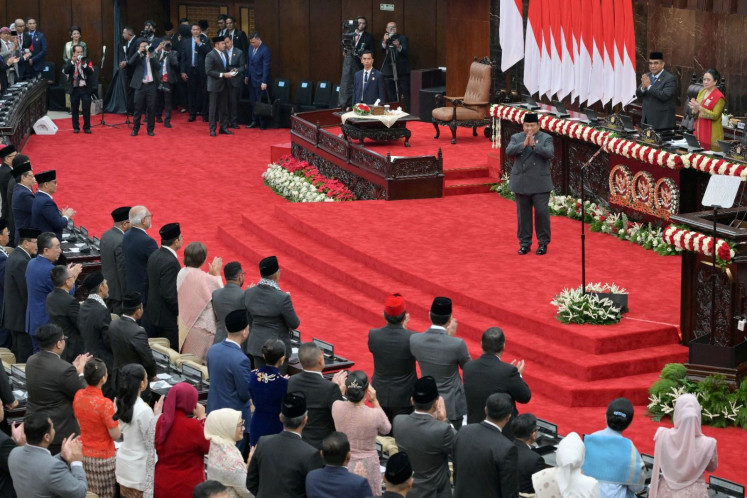Popular Reads
Top Results
Can't find what you're looking for?
View all search resultsPopular Reads
Top Results
Can't find what you're looking for?
View all search resultsBRICS is sliding toward irrelevance; the Rio summit made that clear
The potential of BRICS as an emerging new world order appears to be losing its luster as seen at the bloc's recently concluded summit, which the Chinese president did not attend and which produced a joint declaration that exposed the group's inner contradictions.
Change text size
Gift Premium Articles
to Anyone
T
he BRICS group of nations just concluded its 17th annual summit in the Brazilian city of Rio de Janeiro. But despite member states adopting a long list of commitments covering global governance, finance, health, AI and climate change, the summit was a lackluster affair.
Conspicuously absent were the two most prominent leaders from the group’s founding members Brazil, Russia, India, China and South Africa.
Russian President Vladimir Putin only attended virtually due to an outstanding arrest warrant issued by the International Criminal Court over his role in the war in Ukraine. Chinese President Xi Jinping avoided the summit altogether for unknown reasons, sending his prime minister, Li Qiang, instead.
This was Xi’s first no-show at a BRICS summit, with the snub prompting suggestions that Beijing’s enthusiasm for the group as part of an emerging new world order is in decline.
Perhaps the most notable takeaway from the summit was a statement that came not from the BRICS nations but the United States.
As BRICS leaders gathered in Rio, US President Donald Trump warned on social media: “Any Country aligning themselves with the Anti-American policies of BRICS, will be charged an ADDITIONAL 10% Tariff. There will be no exceptions to this policy.”
Trump has long been critical of BRICS, largely because the group has consistently floated the idea of adopting a common currency to challenge the dominance of the US dollar in international trade.
Such a move makes sense if we focus on trade figures
In 2024, the value of trade among the BRICS nations was around US$5 trillion, accounting for approximately 22 percent of global exports. Member nations have always felt their economic potential could be fully realized if they were not reliant on the US dollar as their common currency of trade. During their 2024 summit, held in the Russian city of Kazan, the BRICS nations entered into serious discussions around creating a gold-backed currency.
At a time when the Trump administration is waging a global trade war, the emergence of an alternative to the US dollar would be a very serious pushback against US economic hegemony.
But the freshly concluded BRICS summit did not present any concrete move toward achieving that objective. In fact, the 31-page Rio de Janeiro joint declaration even contained some reassurances about the global importance of the US dollar.
There are two key obstacles hindering BRICS from translating its vision of a common currency into reality.
The first is that some founding nations are uncomfortable with adopting such an economic model, in large part due to internal rivalries within BRICS itself. India, currently the fourth-largest economy in the world, has a history of periodic confrontation and strategic competition with China. It is reticent about adopting an alternative to the US dollar, concerned that this could make China more powerful and undercut India’s long-term interests.
The second is that the BRICS nations are dependent on their bilateral trade with the US. Simply put, embracing an alternative currency is counterproductive when it comes to the current economic interests of individual countries. Brazil, China and India, for example, all export more to the US than they import from it.
In December 2024 following his election as US president, Trump said, “We require a commitment from these countries that they will neither create a new BRICS currency nor back any other currency to replace the mighty US dollar or they will face 100 percent tariffs and should expect to say goodbye to selling into the wonderful US economy.” This blunt message all but killed any enthusiasm there was for this grand economic model.
BRICS is a behemoth. Its 11 members account for 40 percent of the world’s population and economy. But the bloc is desperately short of providing any cohesive, alternative global leadership.
While Brazil used its position as host to highlight BRICS as a truly multilateral forum capable of providing leadership in a new world order, such ambitions are thwarted by the many contradictions plaguing this bloc. Among these are tensions between founding members China and India, which have been running high for decades.
There are other contradictions, too. In their joint Rio declaration, the group’s members decried the recent Israeli and US attacks on Iran. Brazilian President Luiz Inácio Lula da Silva also used his position as summit host to criticize the Israeli offensive in Gaza.
But this moral high ground appears hollow given that the Russian Federation, a founding member of BRICS, is on a mission to destroy Ukraine. And rather than condemning Russia, BRICS leaders used the Rio summit to criticize recent Ukrainian attacks on Russia’s railway infrastructure.
BRICS’s declared intention to address the issue of climate change is also problematic. The Rio declaration conveyed the group’s support for multilateralism and unity to achieve the goals of the Paris Agreement. But despite China making significant advances in its green energy sector, BRICS contains some of the world’s biggest emitters of greenhouse gases as well as several of the largest oil and gas producers.
BRICS can only stay relevant and provide credible leadership in a fast-changing international order when it addresses its many inner contradictions.
---
The writer is a professor of international politics at Lancaster University. This article is republished under a Creative Commons license.
Your Opinion Matters
Share your experiences, suggestions, and any issues you've encountered on The Jakarta Post. We're here to listen.
Thank you
Thank you for sharing your thoughts. We appreciate your feedback.











